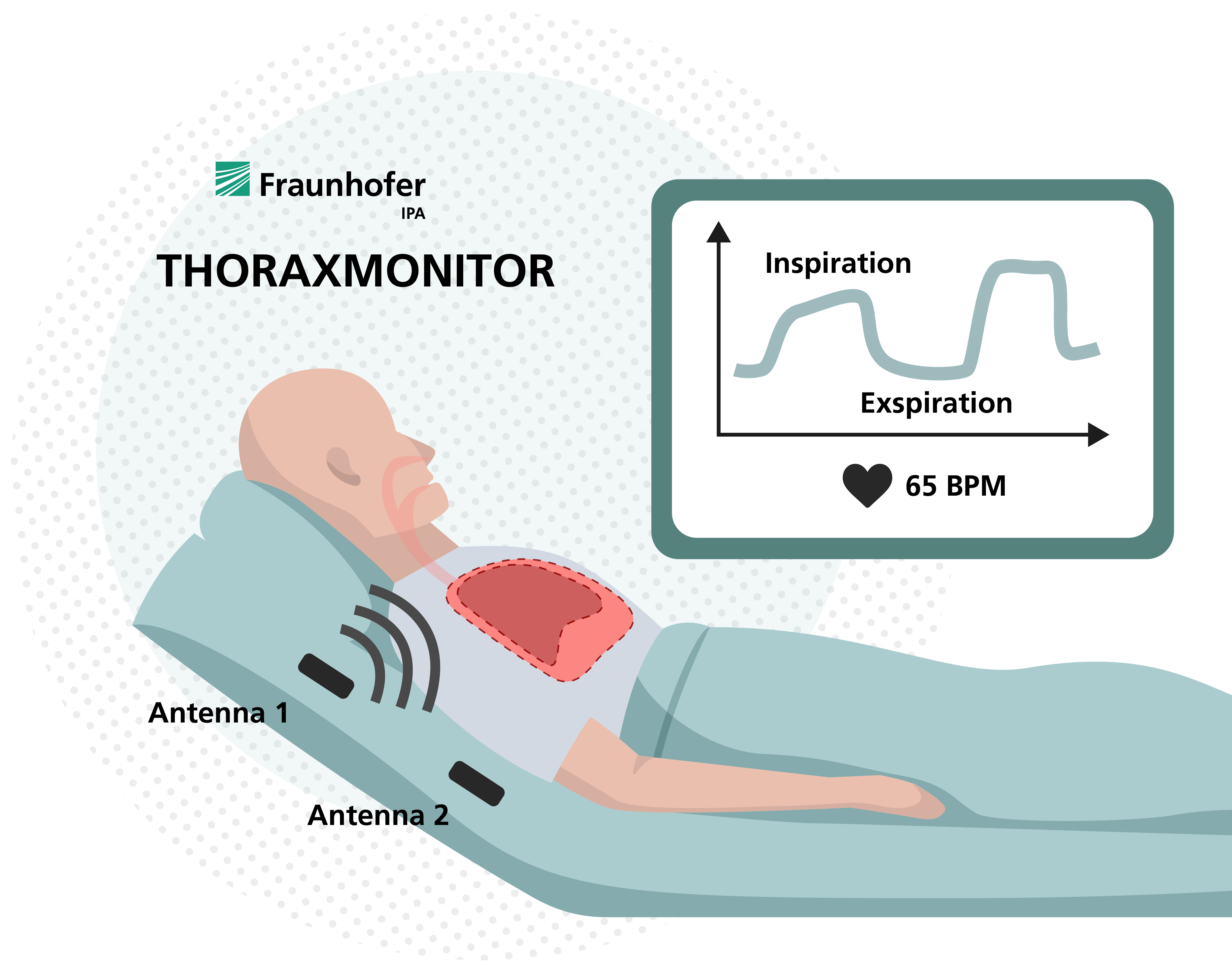
Thoraxmonitor

Contactless measurement of respiratory parameters
Respiratory parameters such as respiratory rate and depth as well as inspiration and expiration are among the most important vital signs for clinical monitoring. Real-time identification of these parameters is essential, for example, for ventilator initiation. In many cases, such as monitoring the breathing of premature infants or even monitoring breathing during sleep, a contactless method is required. This means that there is no direct contact with the patient and that it works reliably even when clothing is worn. Fraunhofer's Thoraxmonitor is based on two tiny antennas that can be integrated into a mattress or into the back of a chair. In this way, a person's respiratory parameters and heartbeat can be detected without the need for any major equipment.
Technical design of the Thoraxmonitor
The Thoraxmonitor is based on at least two antennas arranged at a small spatial distance so that they can communicate with each other despite a very low transmission power. The frequency band can be selected from a wide range (typically from an ISM band such as 433 MHz). The antennas are placed near the patient's upper body, for example in a mattress, so that the radiated waves can pass through.
Even the slightest change in shape or composition affects the received signal. Post-processing can identify artefacts, such as global movement of the upper body, and detect heartbeat and respiration through clothing with a latency of less than 50 ms (compared to an ECG / flow sensor). This method is patent pending (EP, CN, JP, US).

Application example: Thoraxmonitor for gentler artificial ventilation
Artificial ventilation is necessary for the intensive care of patients. Even premature babies sometimes need artificial ventilation because their lungs are not fully developed. However, if the ventilator used works against the breathing impulse of the person being ventilated or forces too much or too high a pressure of air into the lungs, serious complications can occur, leading in the worst case to chronic lung damage. Accurate ventilator settings and monitoring are therefore essential. This is not always possible without invasive or uncomfortable methods due to the small lung volume, especially in premature infants.
This is where the Thoraxmonitor can ensure gentle breathing, especially for premature infants and young children. The Thoraxmonitor provides accurate and very fast contactless measurement of respiratory parameters - it can detect whether the artificially ventilated person is about to breath in or out on their own. The data can be determined with suitable temporal resolution, enabling gentler ventilaltion and avoiding complications.

Use of the Thoraxmonitor at TEDIAS and other possible applications
Due to its small size and low technical determination, the technology can be used in a variety of other applications where contactless and rapid determination of respiratory parameters is required.
For the identification of respiratory rate, the technology is therefore also used within the framework of TEDIAS, the test and development centre for digital patient recording systems. Here, the Thoraxmonitor is integrated into the back of a chair where patients sit down for a medical history and education process. Contactless measurements can be taken in the background.
Another use for the Thoraxmonitor is, for example, the monitoring of infants' breathing to prevent sudden infant death syndrome. The system can also be used to detect and treat sleep apnoea in adults. Its use in synchronising imaging techniques with respiratory activity and heartbeat is being investigated.

 Fraunhofer Institute for Manufacturing Engineering and Automation
Fraunhofer Institute for Manufacturing Engineering and Automation